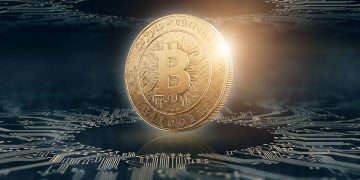Introduction: The Emergence of Digital Currencies
In recent years, digital currencies have moved from the fringes of financial innovation to becoming a major force in the global economy. The advent of cryptocurrencies, led by Bitcoin, has sparked a global debate about the future of money, financial systems, and the traditional banking infrastructure. With the increasing interest in central bank digital currencies (CBDCs) and private stablecoins, the question arises: will digital currencies fundamentally alter the way economies operate, or are they merely a passing trend?
The rise of digital currencies has captured the attention of policymakers, investors, and financial institutions worldwide. As these currencies gain popularity, their potential to disrupt traditional financial systems and economic structures becomes ever more apparent. But while the excitement around digital currencies is palpable, their implications for the broader economic landscape are still unclear.
In this article, we will explore the various facets of digital currencies, examine expert opinions on their potential to reshape the economy, and assess how this new wave of financial innovation could affect traditional financial institutions, monetary policy, and global economic dynamics.
Chapter 1: The Rise of Digital Currencies – What Are They?
Before diving into the broader implications, it’s essential to understand what digital currencies are and how they differ from traditional forms of money.
1.1 Cryptocurrencies: Decentralized and Private
Cryptocurrencies are decentralized digital currencies that operate without the oversight of any central authority, such as a government or a central bank. Bitcoin, created in 2009 by the pseudonymous entity Satoshi Nakamoto, was the first cryptocurrency, introducing the world to the concept of blockchain technology—a decentralized ledger system that records all transactions securely and transparently.
Other notable cryptocurrencies include Ethereum, Ripple (XRP), and Litecoin, each with varying degrees of decentralization, transaction speeds, and purposes. Cryptocurrencies like Bitcoin are often seen as speculative assets, while others like Ethereum are also used as platforms for decentralized applications (dApps) and smart contracts.
The key attributes of cryptocurrencies include:
- Decentralization: They operate on decentralized networks of computers, meaning no central authority controls them.
- Anonymity and Privacy: Transactions can be conducted with a level of privacy, although they are still recorded on public blockchains.
- Security: Blockchain technology provides a high level of security for transactions, making it difficult to tamper with or alter transaction records.
- Global Accessibility: Cryptocurrencies can be accessed and used across borders, making them an attractive option for people in regions with unstable financial systems or limited access to traditional banking.
1.2 Central Bank Digital Currencies (CBDCs)
On the other hand, Central Bank Digital Currencies (CBDCs) represent a government-backed form of digital currency that is issued and regulated by a central bank. Unlike cryptocurrencies, which are decentralized, CBDCs are a digital representation of a nation’s fiat currency. For instance, China has been a leader in testing and implementing its Digital Yuan (e-CNY), and countries like Sweden, the EU, and the U.S. are actively exploring CBDCs as a way to modernize their financial systems.
CBDCs are typically designed to provide many of the advantages of digital currencies (e.g., faster, cheaper cross-border transactions) while retaining the centralized control and stability that fiat currencies have.
Some of the key features of CBDCs include:
- Centralized Control: CBDCs are managed by the central banks, providing them with full oversight over issuance, regulation, and circulation.
- Stability: Unlike cryptocurrencies, which are known for their volatility, CBDCs are pegged to the value of the nation’s fiat currency, making them stable in value.
- Efficiency: CBDCs are designed to improve the efficiency of payment systems by reducing transaction costs and speeding up transfers, especially for cross-border transactions.
- Financial Inclusion: CBDCs can potentially provide digital access to banking services for the unbanked population.
1.3 Private Stablecoins: A Hybrid of Both Worlds
Another form of digital currency that has emerged is stablecoins. These are digital currencies pegged to the value of a fiat currency or other assets (e.g., gold). The most popular stablecoins include Tether (USDT), USD Coin (USDC), and Dai (DAI). Unlike cryptocurrencies like Bitcoin, stablecoins are designed to minimize volatility by maintaining a stable value, making them useful for trading, payments, and storing value.
Stablecoins represent a hybrid of the decentralized nature of cryptocurrencies and the stability of traditional fiat currencies. They have gained widespread adoption, particularly in the world of decentralized finance (DeFi), where users can access lending, borrowing, and trading services without intermediaries.
Chapter 2: The Potential Impact of Digital Currencies on Traditional Financial Systems
As digital currencies continue to evolve, they are poised to challenge the status quo of traditional banking and financial systems. Their potential to reshape various aspects of the economy—such as monetary policy, cross-border transactions, and even the role of central banks—is becoming more evident.
2.1 Monetary Policy: A Shift in Control?
One of the most significant implications of digital currencies is their potential impact on monetary policy. Central banks traditionally control the money supply through the use of tools like interest rates, open market operations, and reserve requirements. However, the rise of digital currencies, especially decentralized ones, could undermine this control.
For example, if a large portion of the global population begins to use cryptocurrencies as a store of value or medium of exchange, central banks may struggle to influence the money supply or control inflation. Similarly, the rise of CBDCs could allow central banks to have more granular control over economic conditions, such as implementing negative interest rates or directly distributing digital currency to citizens.
Furthermore, the use of blockchain technology in digital currencies could make monetary transactions more transparent, allowing for more real-time insights into economic activity. However, the challenge remains for central banks to adapt their policies to effectively manage a rapidly changing financial landscape.
2.2 The Future of Traditional Banking
The proliferation of digital currencies has the potential to reshape the traditional banking system. In a world where people can store and transfer money digitally without relying on banks, the role of financial intermediaries could be greatly reduced. Cryptocurrencies and blockchain technology enable peer-to-peer transactions without the need for intermediaries like commercial banks, which traditionally facilitate payments, loans, and credit issuance.
Moreover, the rise of decentralized finance (DeFi) platforms, powered by cryptocurrencies and smart contracts, could disrupt many traditional banking services, such as lending, borrowing, and insurance. Smart contracts—self-executing contracts with the terms of the agreement directly written into lines of code—could replace traditional legal agreements, making transactions faster, cheaper, and more secure.
This shift away from traditional banking services raises important questions about financial stability, security, and regulation. If digital currencies and decentralized platforms continue to grow, traditional banks may need to adapt by integrating blockchain technology into their systems or offering their own digital currencies.
2.3 Cross-Border Payments and Financial Inclusion
One of the most exciting possibilities that digital currencies present is the potential to revolutionize cross-border payments. Traditional international money transfers are often slow, costly, and reliant on intermediaries, such as banks and payment processors. Digital currencies, particularly stablecoins and CBDCs, offer the potential for faster, cheaper, and more efficient cross-border transactions.
For example, stablecoins like USDC allow for instant, low-cost transactions across borders, bypassing traditional financial institutions and their associated fees. CBDCs could also facilitate seamless cross-border payments between countries, providing a more streamlined and efficient global payments system.
Furthermore, digital currencies could provide financial inclusion for billions of people who remain unbanked or underbanked, particularly in developing regions. With access to smartphones and the internet, individuals can use digital currencies for payments, savings, and even access to credit, without needing to rely on traditional banks.

Chapter 3: Expert Opinions – How Will Digital Currencies Affect the Global Economy?
While the potential for digital currencies to reshape the global economy is immense, experts remain divided on how far-reaching these changes will be. Here are some of the key perspectives from industry leaders and economists.
3.1 A Transformational Shift: Embracing Digital Currencies
Some experts view the rise of digital currencies as a transformational shift that could fundamentally change the way economies function. Christine Lagarde, President of the European Central Bank, has highlighted the potential of CBDCs to improve the efficiency and stability of financial systems. She argues that digital currencies could reduce reliance on traditional financial intermediaries, enhance cross-border transactions, and provide central banks with more control over monetary policy.
Moreover, advocates of digital currencies believe that blockchain technology, with its decentralized and transparent nature, has the potential to reduce financial inequality and democratize access to financial services.
3.2 Caution and Skepticism: Risks and Challenges
However, other experts caution that the rise of digital currencies may come with significant risks and challenges. Paul Krugman, a Nobel laureate in economics, has expressed concerns about the speculative nature of cryptocurrencies like Bitcoin, suggesting that they are more of a bubble than a revolutionary financial tool. He argues that cryptocurrencies, with their high volatility, do not serve as a stable store of value or unit of account, which are fundamental qualities of money.
Additionally, security concerns around digital currencies—particularly the potential for hacking, fraud, and money laundering—remain significant obstacles. Governments and regulators will need to develop comprehensive frameworks to ensure that digital currencies are used safely and effectively.
3.3 The Middle Ground: Evolution, Not Revolution
Some experts take a more balanced approach, suggesting that digital currencies will likely lead to evolutionary changes rather than a complete revolution of the financial system. Mark Carney, former Governor of the Bank of England, has pointed out that while cryptocurrencies may not replace traditional currencies, they could become an important complement to them. He sees CBDCs as a way to modernize payment systems without fundamentally disrupting existing financial structures.
Experts also emphasize the importance of regulation in the development of digital currencies. Governments will play a crucial role in shaping the future of digital currencies by introducing clear rules and guidelines to ensure that these technologies are used responsibly.
Conclusion: The Future of Digital Currencies and Traditional Economies
The rise of digital currencies is undeniably reshaping the financial landscape. While some experts believe that they will usher in a new era of financial inclusion, efficiency, and decentralization, others caution that their risks and challenges should not be underestimated.
As digital currencies continue to evolve, they will undoubtedly have a profound impact on traditional banking systems, monetary policy, and global economic dynamics. Whether they will completely disrupt the traditional economic structure or merely complement it remains to be seen. What is clear, however, is that the future of money is changing, and the global economy will need to adapt to these new developments.
In the coming years, we can expect further experimentation with digital currencies, from central bank-backed digital currencies to private stablecoins and cryptocurrencies. The real question is not whether digital currencies will play a role in the future, but how they will coexist with traditional financial systems, and whether regulators can create frameworks that allow for their safe and productive integration. As this trend continues to evolve, investors, businesses, and governments will need to remain agile and open to the opportunities—and risks—that lie ahead.


















































